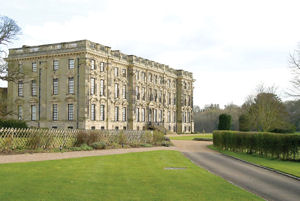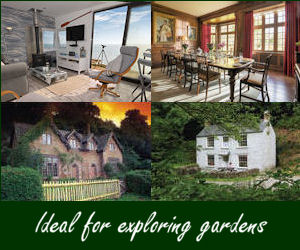Stoneleigh Abbey
| Contact | The Estate Office |
| Enquiries | 01926 850585 |
| Fax | 01926 850724 |
| enquire@stoneleighabbey.org | |
| Website | www.stoneleighabbey.org |
| Stoneleigh overlooks the Avon River, surrounded by 690 acres of Grade II* listed parkland and grounds landscaped by Humphry Repton in 1809. | |
| Open | Good Friday - end of Oct, (House Tours Tues, Weds, Thurs, Sun & Bank Holidays @ 11:30, 13:00 & 14:30. Grounds open 11:00 - 17:00 The tea room is open 11:00 - 16:00 |
| Admission | House Tour & Grounds: Adults: £9.50 (Includes free 1st child) Children £4.50. Grounds only £4.50 per person Children free Garden Season Ticket Easter - October £25.00 |
Stoneleigh Abbey, Warwickshire was Founded in 1154 by a group of Cistercian monks. The Abbot's House, built in 1346 is not only one of the few remaining complete and still standing, it is also one of the finest examples of medieval architecture in whole of the country. The building subsequently became known and is still known as, the Abbey Gatehouse.
The abbey was purchased in 1538 by Henry VIII's brother in law. In 1561 the abbey was sold to two London merchants, Sir Rowland Hill and Sir Thomas Leigh. Sir Thomas Leigh was Lord Mayor of London in the year of Queen Elizabeth I's accession, and was himself knighted by her.
Sir Thomas Leigh died in 1571, but his widow Alice Leigh survived until 1603, giving her name to the almshouses in the village. Her son Sir Thomas Leigh 1st Baronet was responsible for rebuilding parts of the abbey, and by 1626 had completed "many richly furnished rooms".
This work continued under his grandson, the first Lord Leigh (1643). Just before the outset of English Civil War, Charles I rode to Coventry in anticipation of securing the commercial centre, but the city closed its gates to him, and he was received by Lord Leigh at Stoneleigh.
In 1720 Francis Smith of Warwick began work on the Great West Wing which is considered to be the masterpiece of this famous and prolific architect. The State Rooms of the West Wing boast some of the finest freehand three dimensional plasterwork to be seen anywhere.
In 1786 the fifth Lord Leigh died unmarried, leaving Stoneleigh Abbey to his sister and after his sisters death in 1806 to the next nearest male relative, James Henry Leigh of Adlestrop. James Leigh was a minor at the time so his uncle, the Reverend Thomas Leigh, Rector of Adlestrop, travelled to Stoneleigh to lay claim to his nephew's inheritance.
The gardens at Adlestrop had been much improved by Humphry Repton so successful were these improvements that Repton was brought to Stoneleigh by the Reverend Thomas Leigh to work similar wonders. Repton presented his ideas in one of his finest and largest Red books - Stoneleigh Abbey Red Book.
Not all his recommendations were carried out, but the River Avon was widened in front of the house to form a lake, a picturesque stone bridge across the Avon based on a design of Inigo Jones was built, and an inspirational reflective pool was created to mirror in its stillness the south facade, formed by a weir designed to noisily churn the waters of the river.
In the 1810s - 1820s C. S. Smith a pupil of Sir Jeffry Wyattville (Chatsworth House & Windsor Castle) designed many of the buildings in the park, including the Riding School and Stables (1814), a masterpiece of Gothic Revival architecture built of red sandstone, symmetrical and castellated with a raised entrance arch.
Later William Nesfield was responsible for the Italianate garden created for when Queen Victoria and Prince Albert stayed at Stoneleigh on the 14h June 1858, and in the twentieth century Percy Cane restored and replanted the western terrace.



